Forums
- Forums
- Duggy's Reference Hangar
- USAAF / USN Library
- Douglas XBLR-2/XB-19
Douglas XBLR-2/XB-19
Post a reply
- Go to Previous topic
- Go to Next topic
- Go to Welcome
- Go to Introduce Yourself
- Go to General Discussion
- Go to Screenshots, Images and Videos
- Go to Off topic
- Go to Works in Progress
- Go to Skinning Tips / Tutorials
- Go to Skin Requests
- Go to IJAAF Library
- Go to Luftwaffe Library
- Go to RAF Library
- Go to USAAF / USN Library
- Go to Misc Library
- Go to The Ops Room
- Go to Made in Germany
- Go to Campaigns and Missions
- Go to Works in Progress
- Go to Juri's Air-Raid Shelter
- Go to Campaigns and Missions
- Go to Works in Progress
- Go to Skinpacks
- Go to External Projects Discussion
- Go to Books & Resources
-
10 years agoSun Sep 12 2021, 01:13pmDuggy
 Main AdminThe XB-19 project had its origin in a secret Army Air Corps project of the mid 'thirties for an advanced long-range bomber. On February 5, 1935, the Army Air Corps initiated a secret project for an experimental long-range bomber, with the goal of seeing just how far the state of the art could be pushed. It was assigned the codename "Project D", and was classified top secret. No production was envisaged, since "Project D" was more of a proof-of-concept vehicle than it was a serious proposal for a production military aircraft.
Main AdminThe XB-19 project had its origin in a secret Army Air Corps project of the mid 'thirties for an advanced long-range bomber. On February 5, 1935, the Army Air Corps initiated a secret project for an experimental long-range bomber, with the goal of seeing just how far the state of the art could be pushed. It was assigned the codename "Project D", and was classified top secret. No production was envisaged, since "Project D" was more of a proof-of-concept vehicle than it was a serious proposal for a production military aircraft.
Preliminary discussions were carried out with Douglas and Sikorsky, the only two companies which showed any interest in participating in the project. The Army wanted the prototype to be delivered by March 31, 1938.
On July 9, 1935, the designation XBLR-2 was assigned to the Douglas proposal, the type symbol BLR standing for Bomber, Long Range. The BLR type symbol had been introduced in 1935 to cover large, long-range bombers. At the same time, the competing Sikorsky design was assigned the designation XBLR-3.
A contract covering preliminary and detailed design, mock-up construction and testing of critical components was sent to Douglas in October of 1935 and was approved on October 18.
In March of 1936, wooden mockups of the Douglas and Sikorsky designs were inspected. At that time, the Douglas proposal was deemed superior, and the contract for the Sikorsky XBLR-3 was cancelled.
Progress on the XBLR-2 proceeded rather slowly due to the shortage of funds caused by the limited military budget allocated for research and development during the Depression years 1935 to 1937.
The aircraft was conceived as a large, four-engined, low-winged monoplane. A tricycle undercarriage was to have been fitted, which was still rather unusual for the time. This undercarriage was tested on a Douglas OA-4B Dolphin amphibian loaned back to the company by the Army.
The XBLR-2 was originally to have been powered by four 1600 hp Allison XV-3420-1 twenty-four cylinder liquid-cooled engines. The XV-3420 was basically a pair of V-1710 twelve-cylinder liquid-cooled Vee engines coupled together to drive a single propeller. On November 2, 1936, the Douglas company decided to substitute the 2000 hp Wright R-3350 air-cooled radial for the coupled Allisons originally specified.
The separate BLR type symbol was abolished in 1936, and the XBLR-2 was redesignated B-19 in the B-for-bomber series. By late 1937, enough R & D funds had been made available so that a contract change calling for the construction of a single prototype under the designation XB-19 was issued on November 19, 1937, but not approved until March 8, 1938. The serial number 38-471 was assigned.
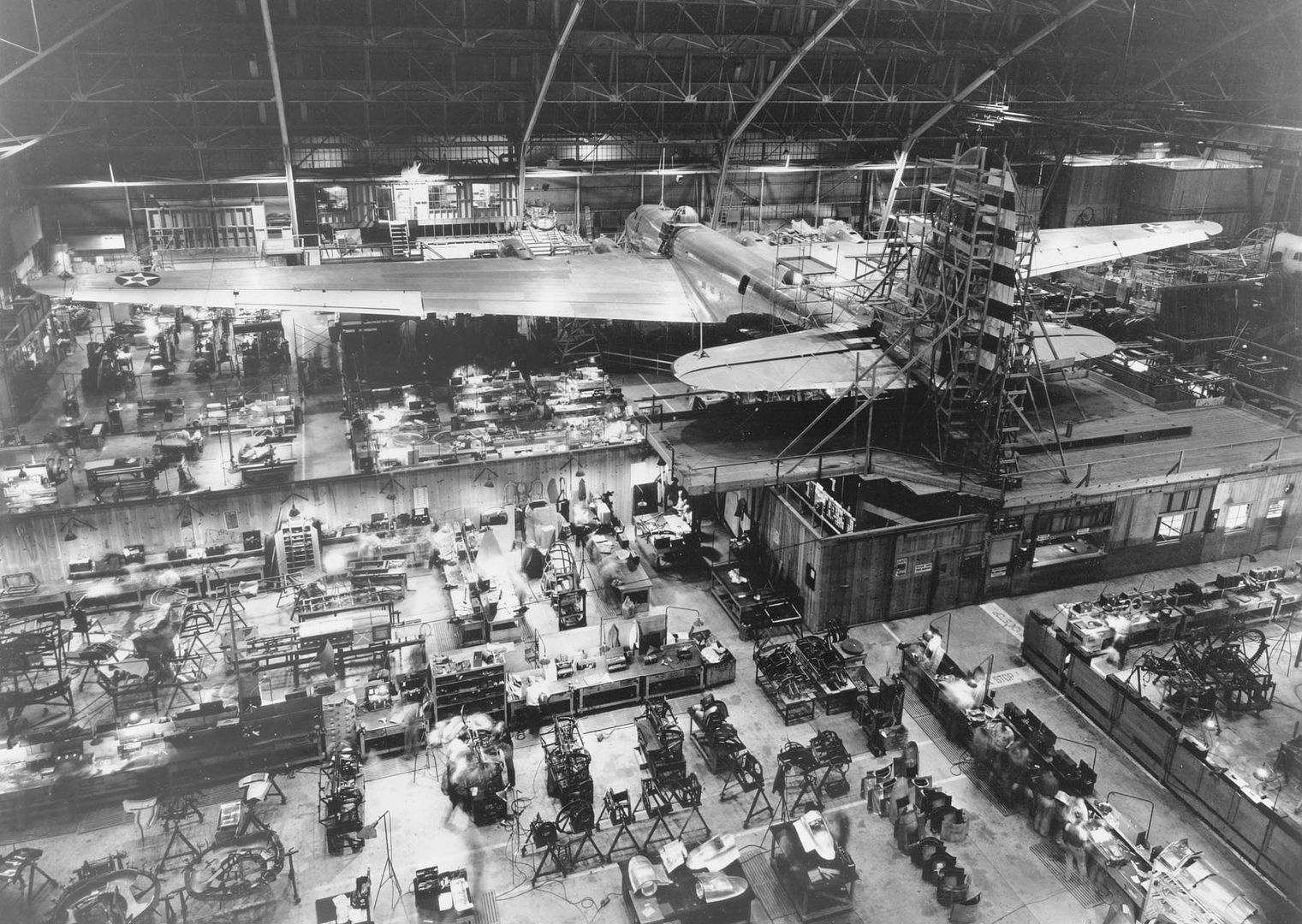
Below cockpit
Below wheel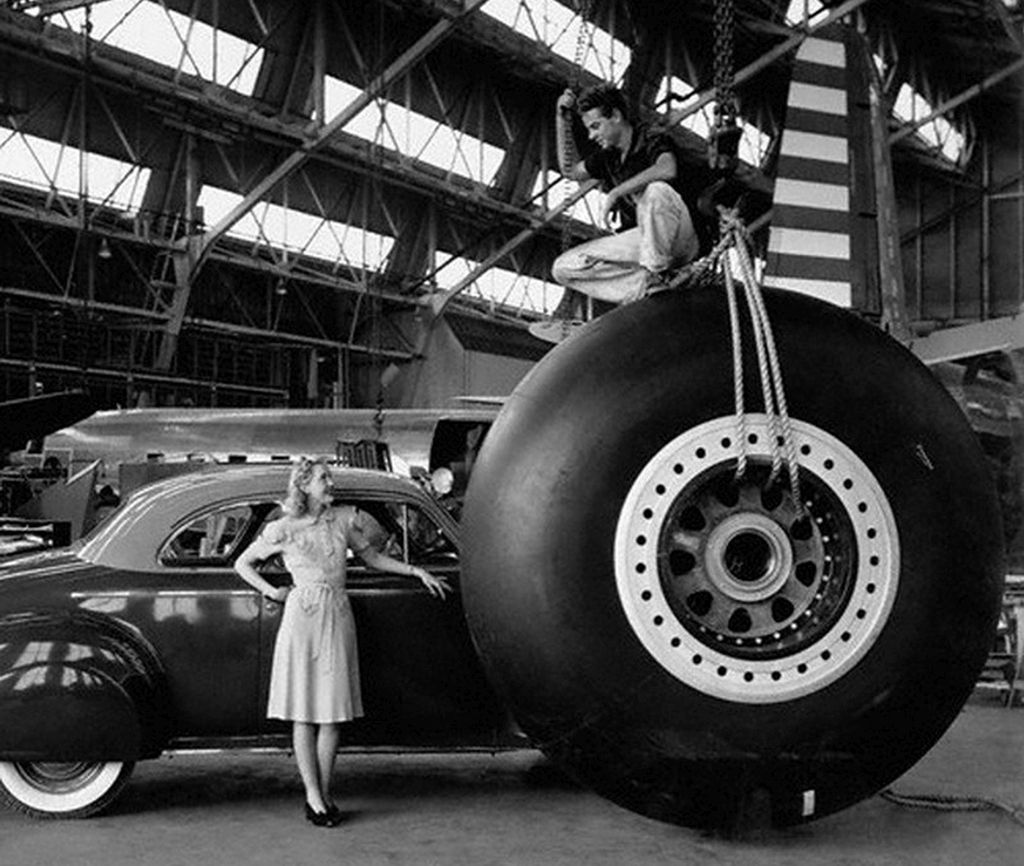
Below inside the nose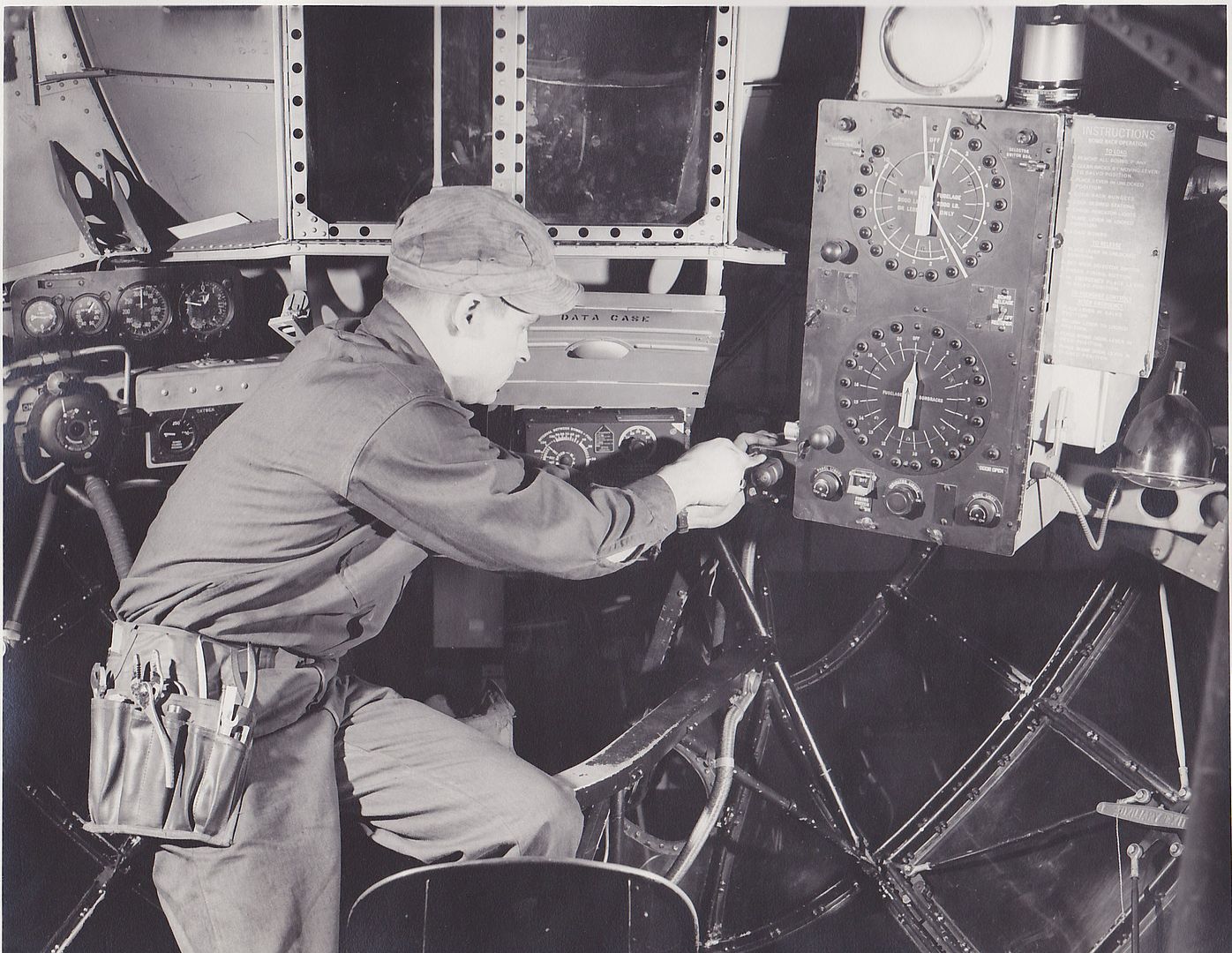
Below rear fuselage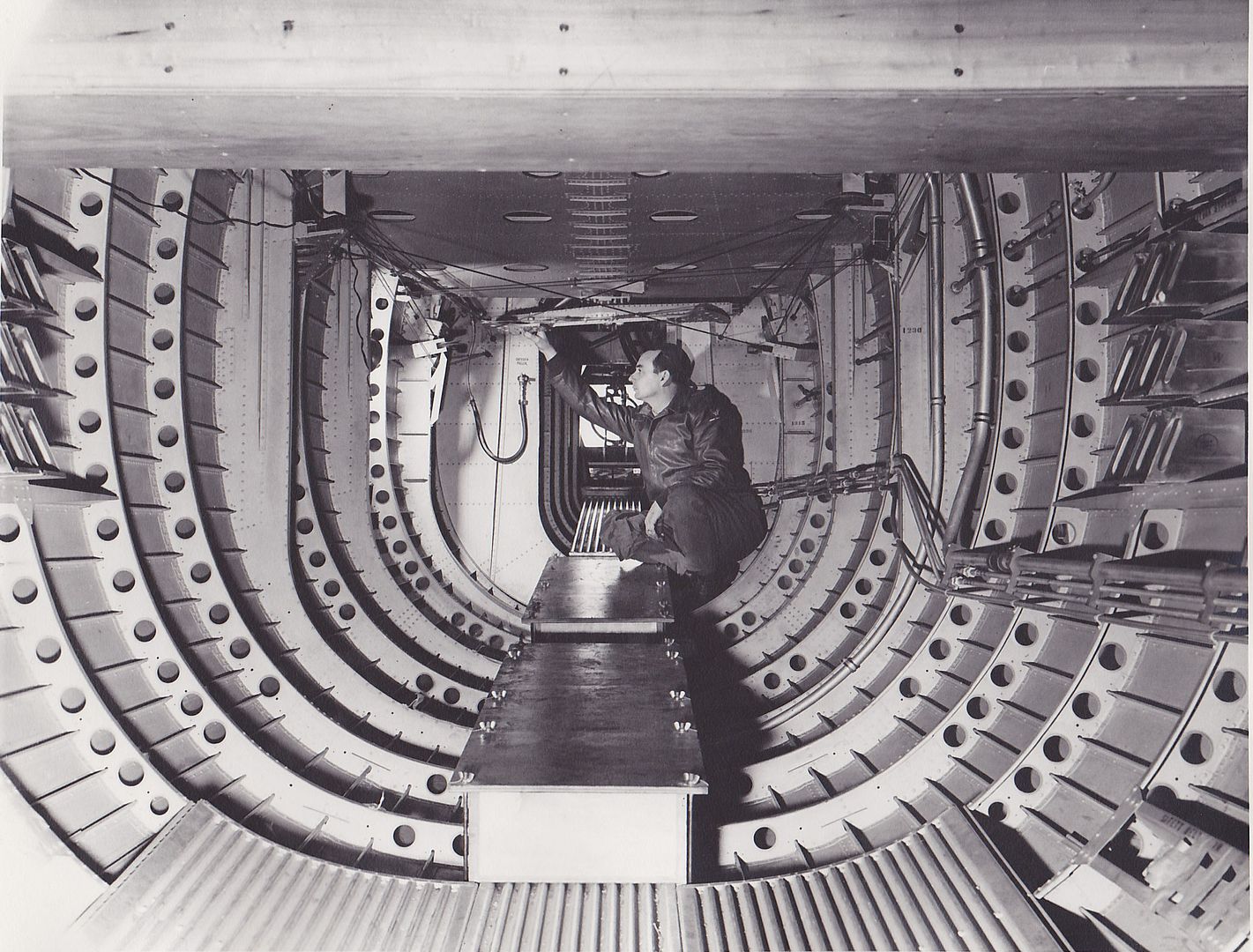
Below port wing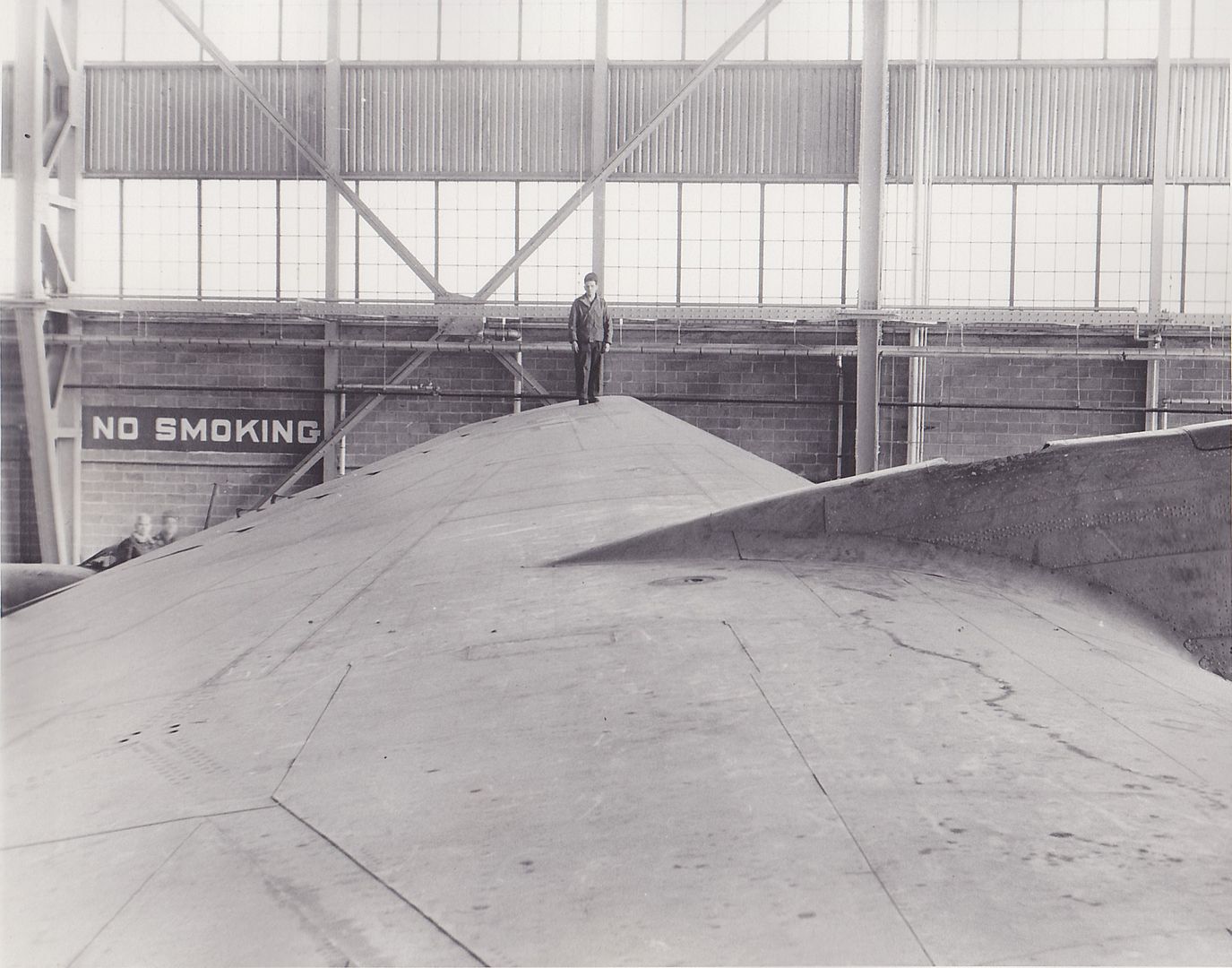
Below inside the wing
By late 1938, the XB-19 was way behind schedule because of the lack of adequate development funds from the USAAC. The Douglas company had been forced to spend a considerable amount of its own money on the XB-19 project and badly needed the XB-19 design staff to work on other aircraft projects that had better prospects for a production future. By this time, the weight of the XB-19 was increasing excessively, resulting in an expectation of a progressively poorer and poorer performance with the engines specified. During the previous three years the advances in the state of the art had been so rapid that the basic B-19 design was by this time quite obsolescent. Consequently, on August 30, 1938 the company recommended to the Army that the XB-19 contract be cancelled.
However, the Army's Materiel Division refused to abandon the project, and construction of the first prototype continued slowly at Douglas. In 1940, the Army, perhaps recognizing that the XB-19 had by that time lost most if not all of its military importance, finally removed the aircraft from its list of secret projects, and the aircraft became a hot item in the popular press as a radically new long-range bomber for America's defense against foreign foes.
The XB-19 was finally completed in May of 1941. It was a very large, all-metal stressed-skin low-winged monoplane with a retractable tricycle undercarriage. It had a wingspan of 212 feet and a maximum gross weight of 162,000 pounds. It was physically the largest American aircraft yet built, and was to remain so until the completion of the Convair B-36 in 1946.
The XB-19 was powered by four Wright R-3350-5 eighteen-cylinder air-cooled radials rated at 2000 hp each for takeoff. They drove three-bladed constant-speed propellers. Total internal fuel capacity was 10,350 US gallons, with provision for the fitting of additional tanks of 824 gallon capacity in the bomb bay for additional range. Bombs could be carried either in an internal bomb bay or on ten underwing racks. The internal bomb bay could accommodate eight 2000-pound, 16 1100-pounds, or 30 600-pound bombs. The ten underwing racks could each accommodate bombs of up to 2000 pounds in weight for short-range missions. Maximum bomb capacity was 37,100 pounds.
Defensive armament of the XB-19 (not fitted at the time of completion) was quite heavy for the time. It consisted of one 37-mm cannon and one 0.30-inch machine gun in each of the nose and forward dorsal turrets, one 0.5-inch machine gun in the tail position, rear dorsal turret, ventral turret, and port and starboard positions. One 0.30-inch machine gun was fitted on each side of the bombardier's position and on each side of the fuselage below the tailplane. There was no armor protection for the crew and there were no self-sealing fuel tanks included, but these features would undoubtedly have to have been included had the B-19 ever gone into production.
The normal combat crew of the XB-19 was 16, which included a pilot, co-pilot, aircraft commander, navigator, flight engineer, radio operator, bombardier, a gunner operating the nose power turret, a gunner who operated 0.30-inch guns pointing from each side of the nose compartment, a gunner operating the forward dorsal power turret, an upper rear dorsal turret gunner, two waist gunners, a belly gunner, a tail gunner, and a gunner seated below the stabilizer operating 0.30-inch guns firing from either side of the aircraft. However, an additional crew consisting of 2 flight mechanics and six relief crewmembers could be carried in a special compartment installed in the fuselage above the bomb bay with eight seats and six bunks. Passages in the lower wing gave mechanics direct access to the engines while the aircraft was in flight. The XB-19 even had a complete galley for the inflight preparation of hot meals.
Over three years behind the original schedule, the first flight of the XB-19 took place from Clover Field in Santa Monica on June 27, 1941 with a crew of seven captained by Major Stanley M. Umstead. On its first flight, it was flown to March Field and turned over to the Army for evaluation. Such was the degree of popular enthusiasm aroused by the XB-19 that President Franklin Roosevelt himself telegraphed congratulations to Donald Douglas for this achievement.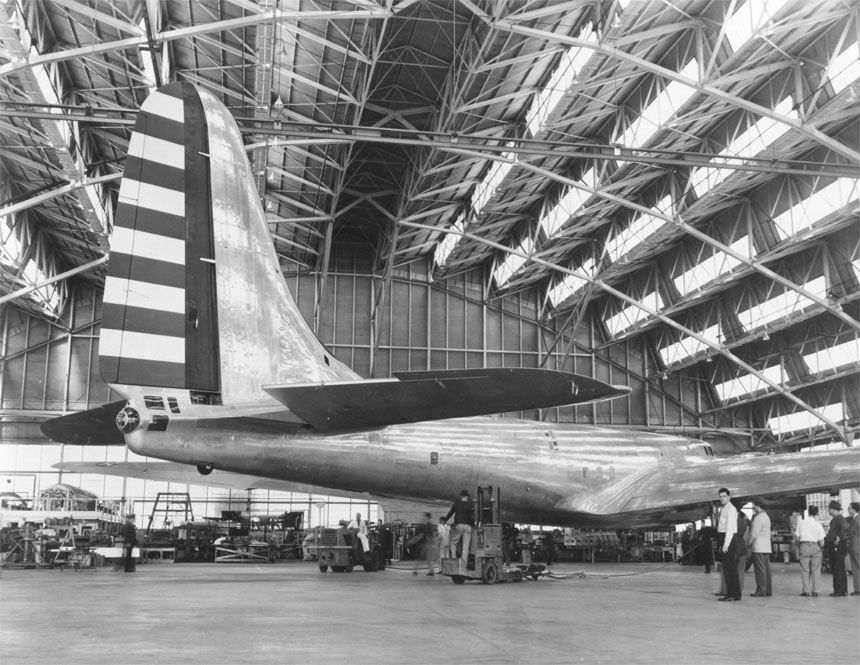

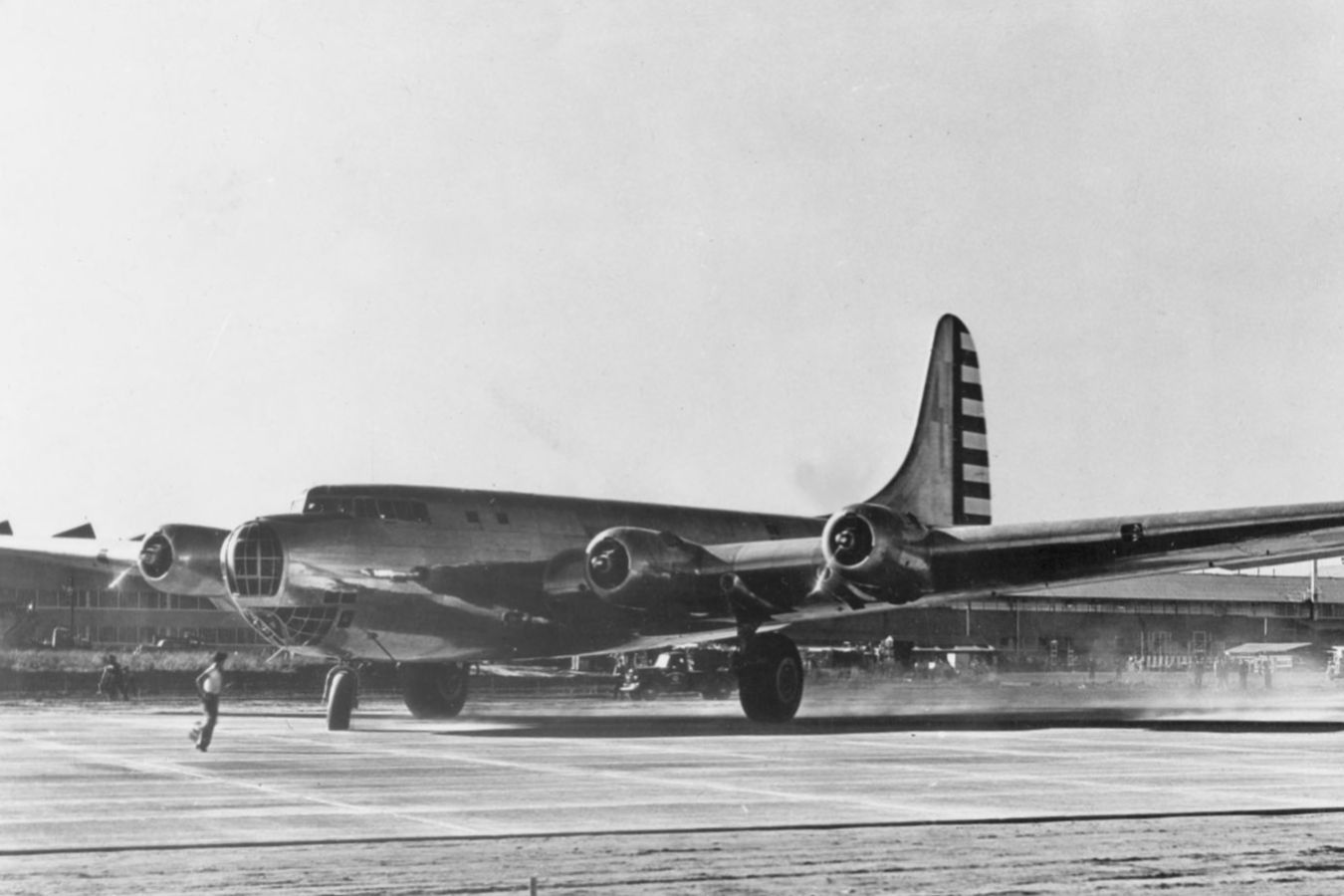
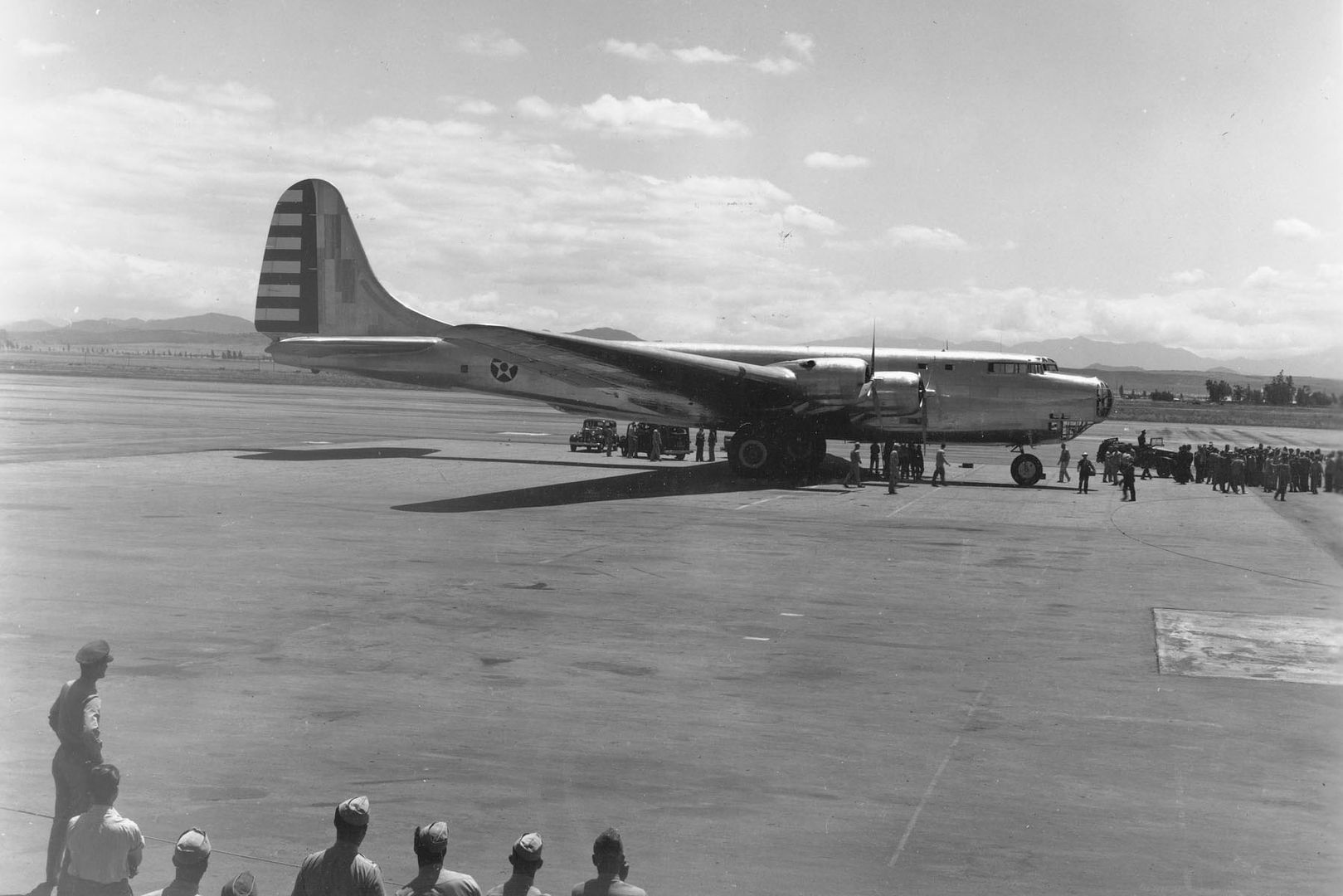
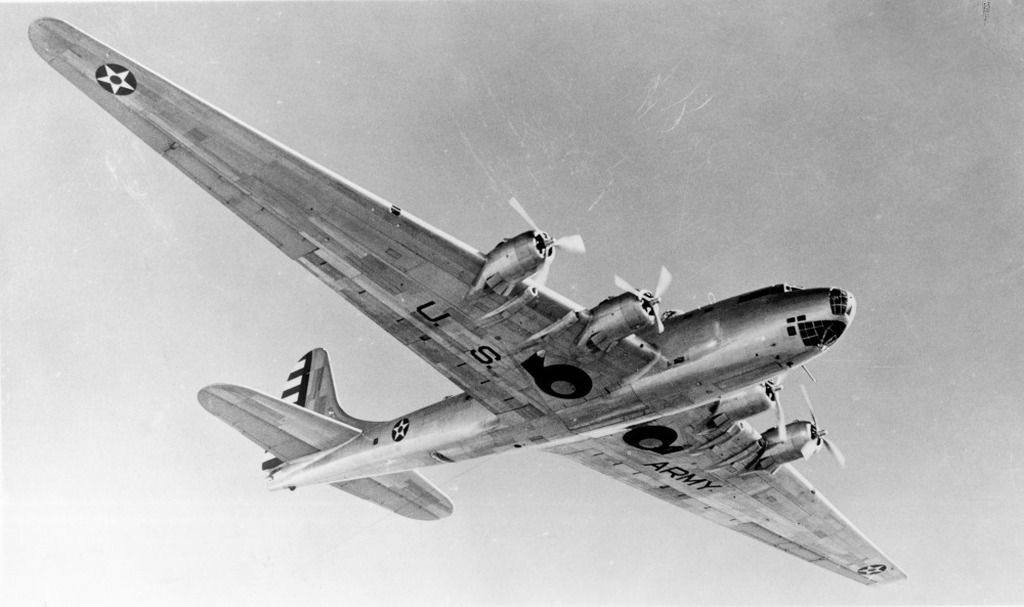

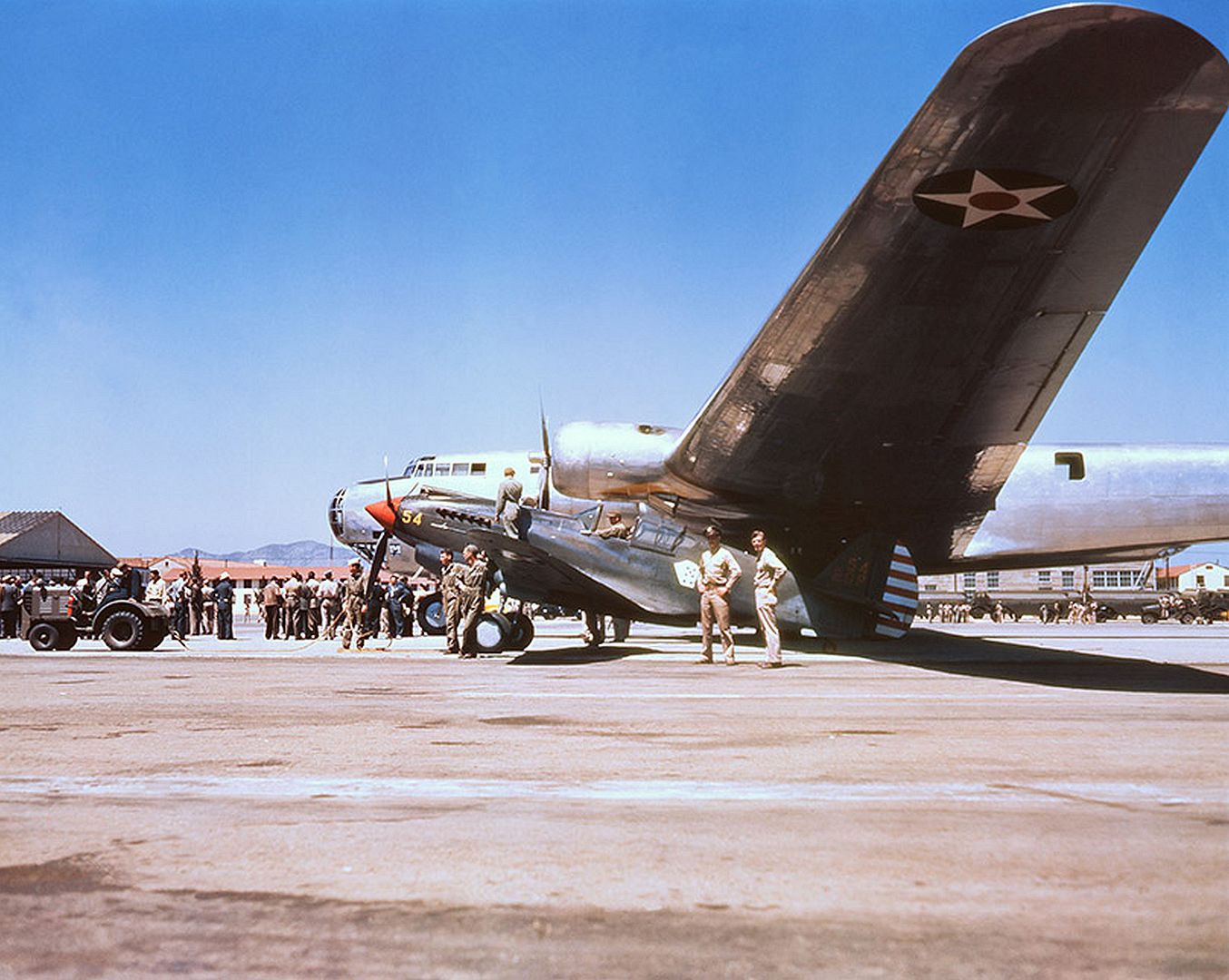
Thirty hours of manufacturer's flight tests were carried out at March Field before the XB-19 was tentatively accepted by the Army in October of 1941. After the attack on Pearl Harbor on December 7, 1941, as a matter of precaution the XB-19 was painted in camouflage and its guns were loaded during its last four test flights in California. On January 23, 1942, the XB-19 was transferred to Wright Field in Dayton, Ohio, hopefully well out of range of any attacking Japanese aircraft.
After more tests and the carrying out of some minor modifications which included the installation of improved brakes, the aircraft was formally accepted by the Army in June of 1942. The Army paid Douglas $1,400,064 for the XB-19. However, the company had spent almost 4 million dollars of its own funds on the project, so Douglas managed to lose money on the XB-19. Nevertheless, the XB-19 proved on tests to be relatively trouble-free, with the exception of engine cooling difficulties. These problems required that the engine cooling gills be kept open during long flights, reducing maximum speed at 15,700 feet from 224 mph to 204 mph.
Below XB-19 in olive drab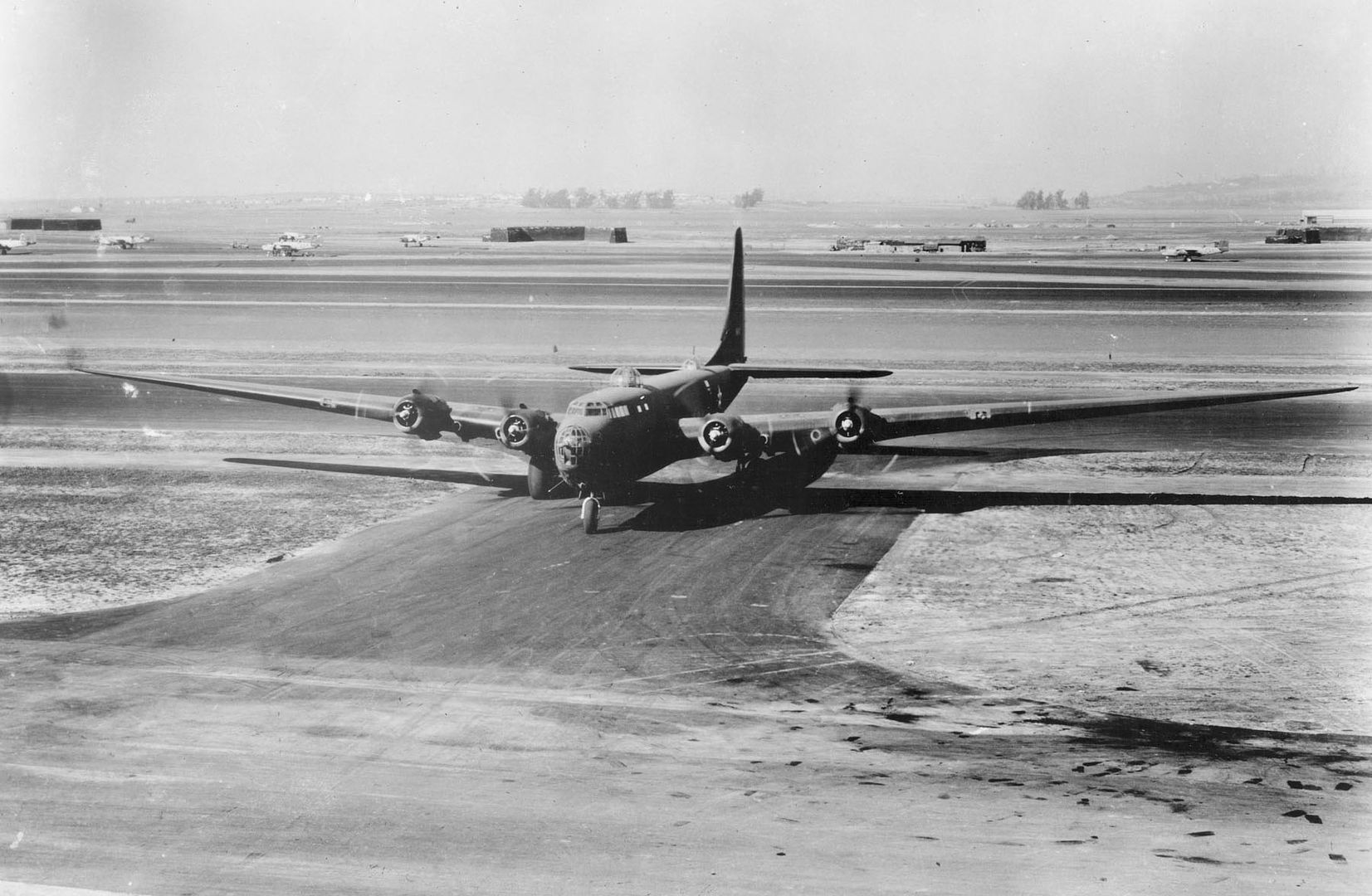
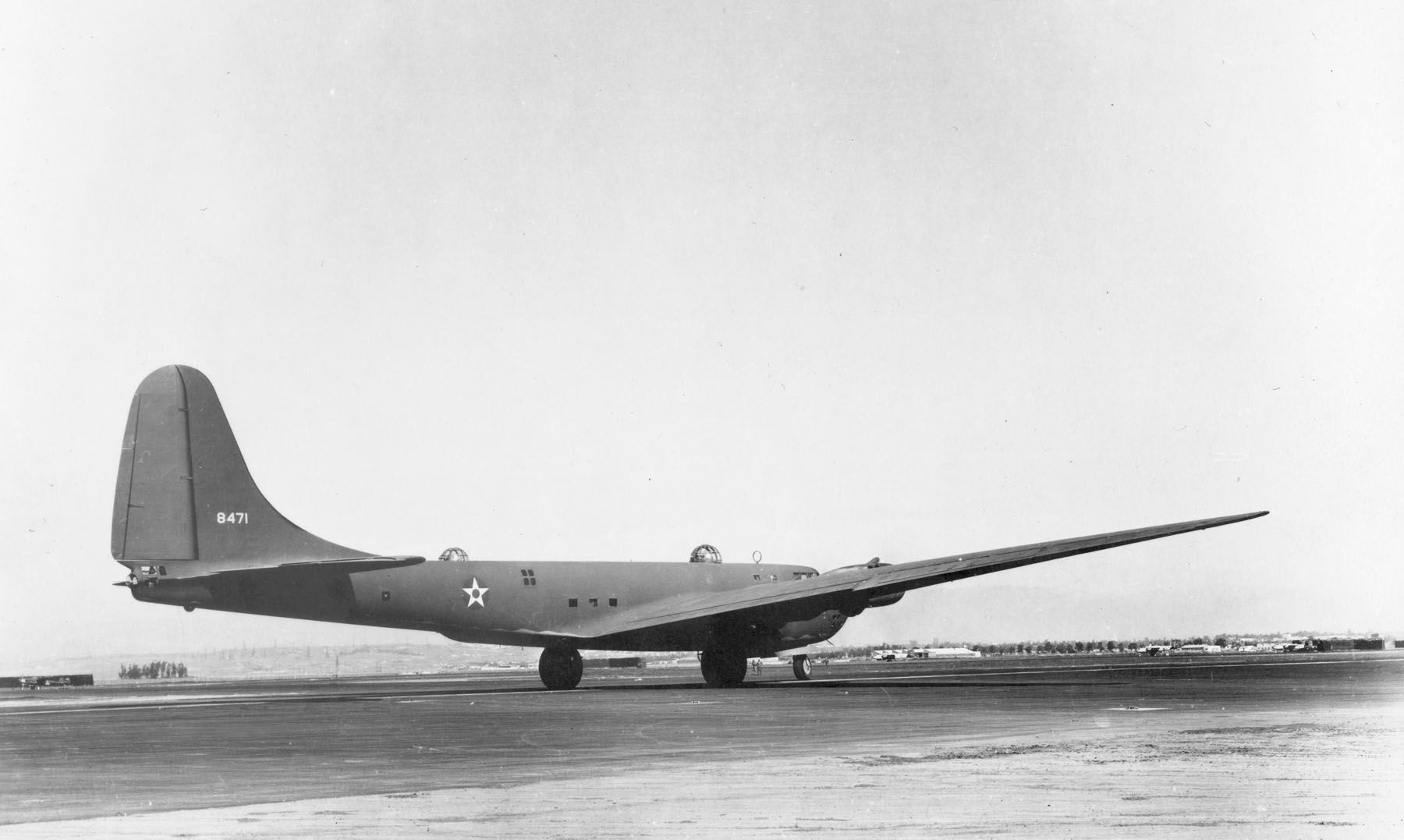

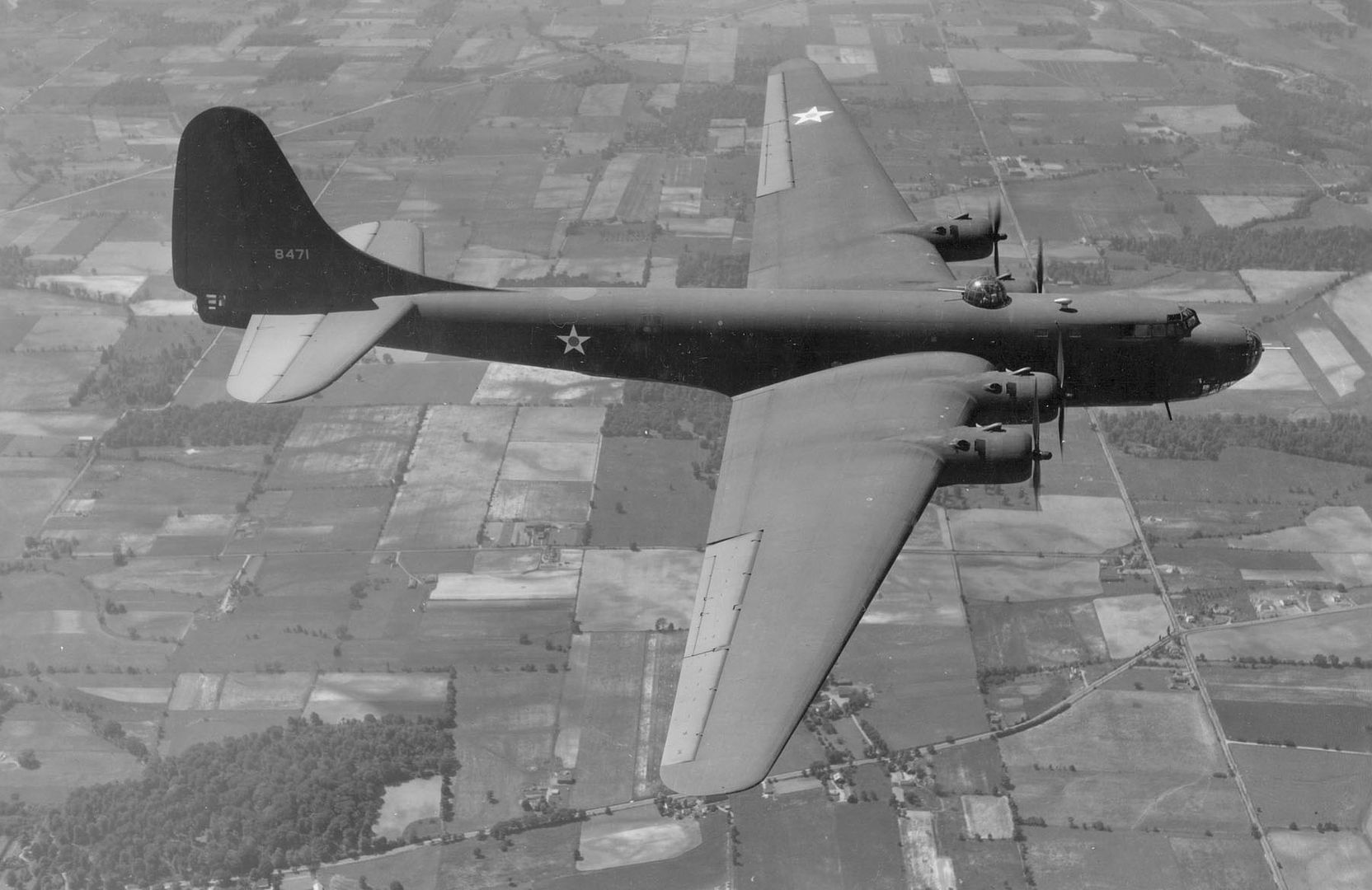
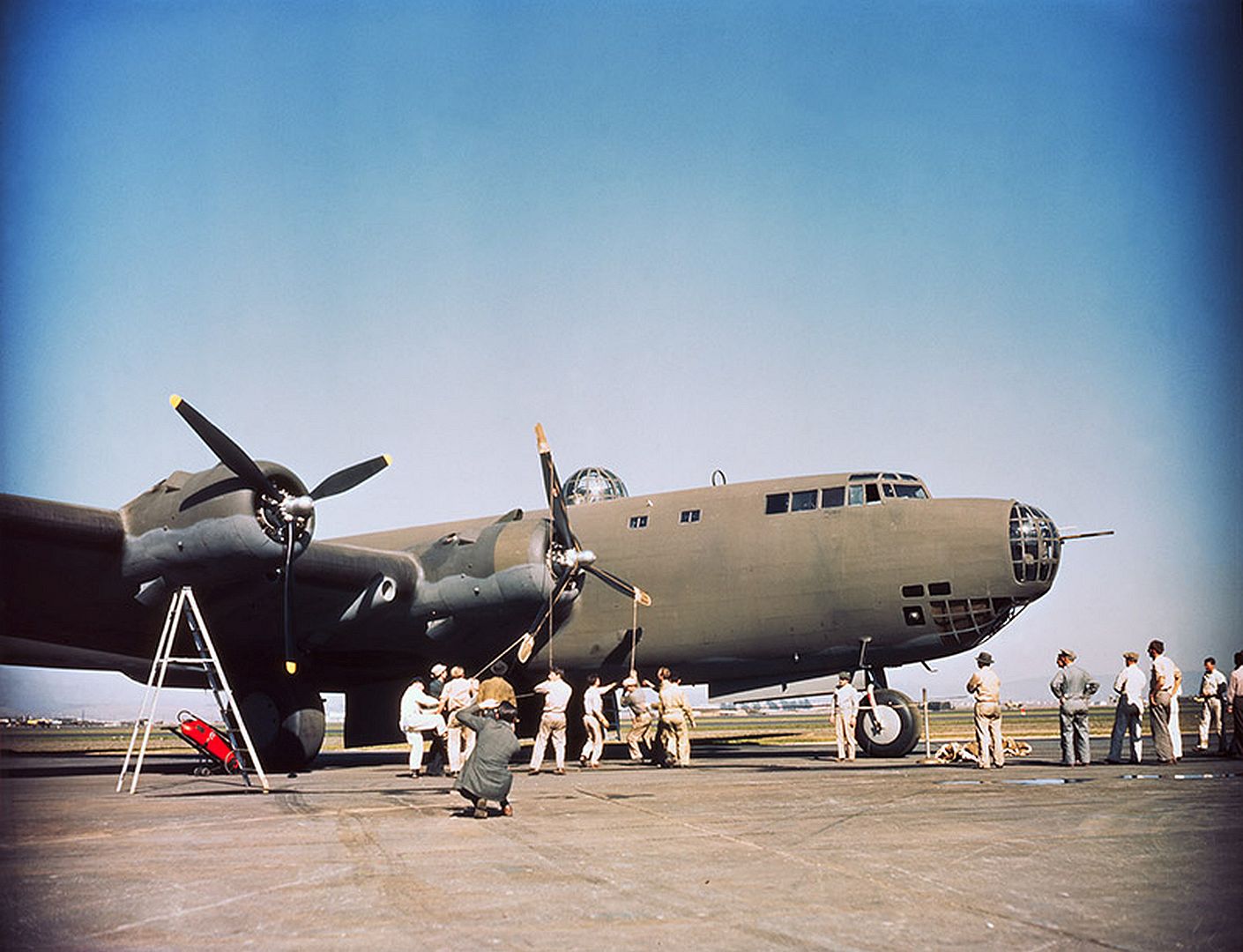
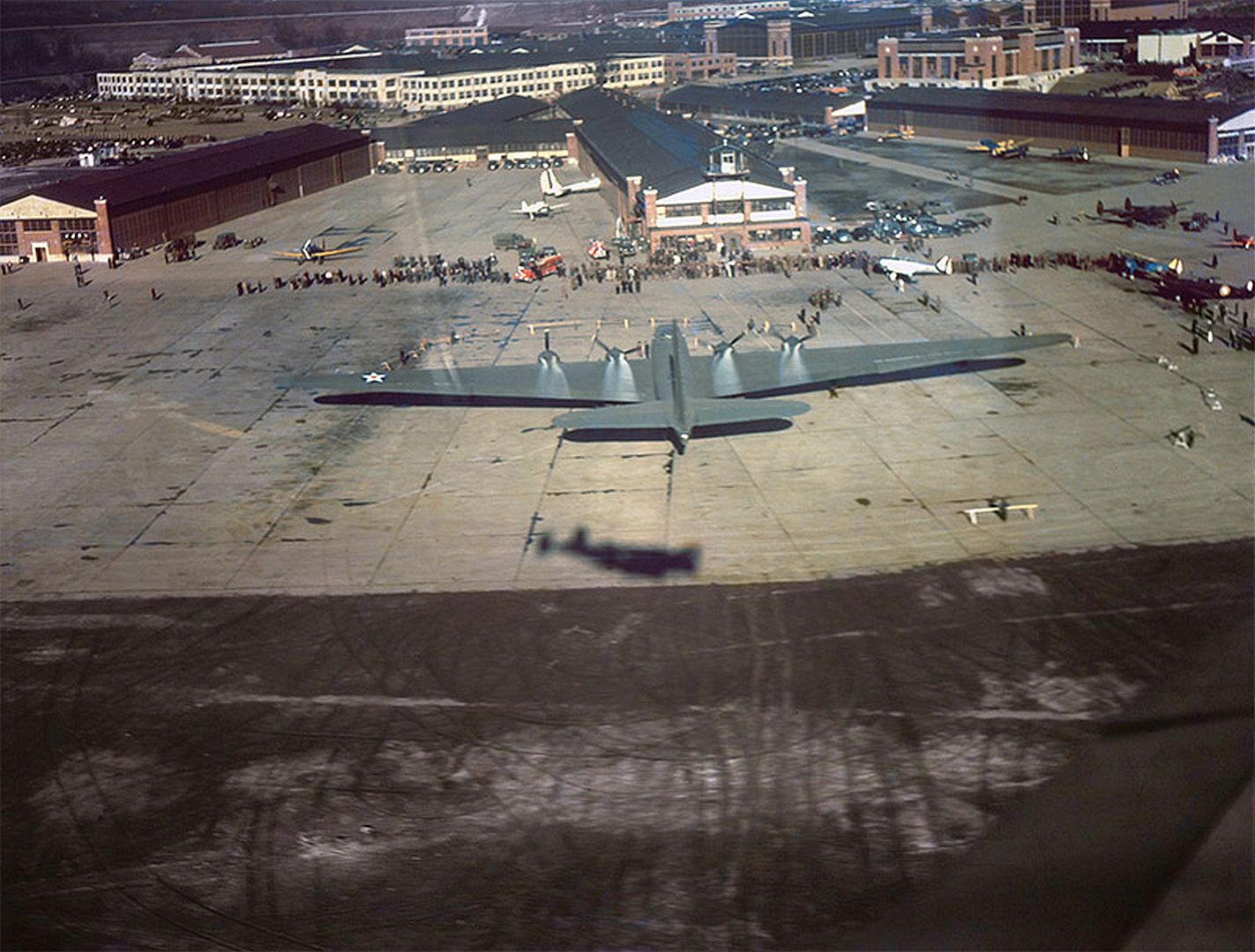
Following the completion of its series of flight tests, the XB-19 was eventually modified at Wright Field as a cargo aircraft and fitted with four 2600 hp Allison V-3420-11 turbosupercharged twenty-four cylinder liquid cooled engines, which was the production version of the engine that had originally been specified for the aircraft. It was redesignated XB-19A. The XB-19A could reach a maximum speed of 275 mph and was no longer plagued with engine cooling problems.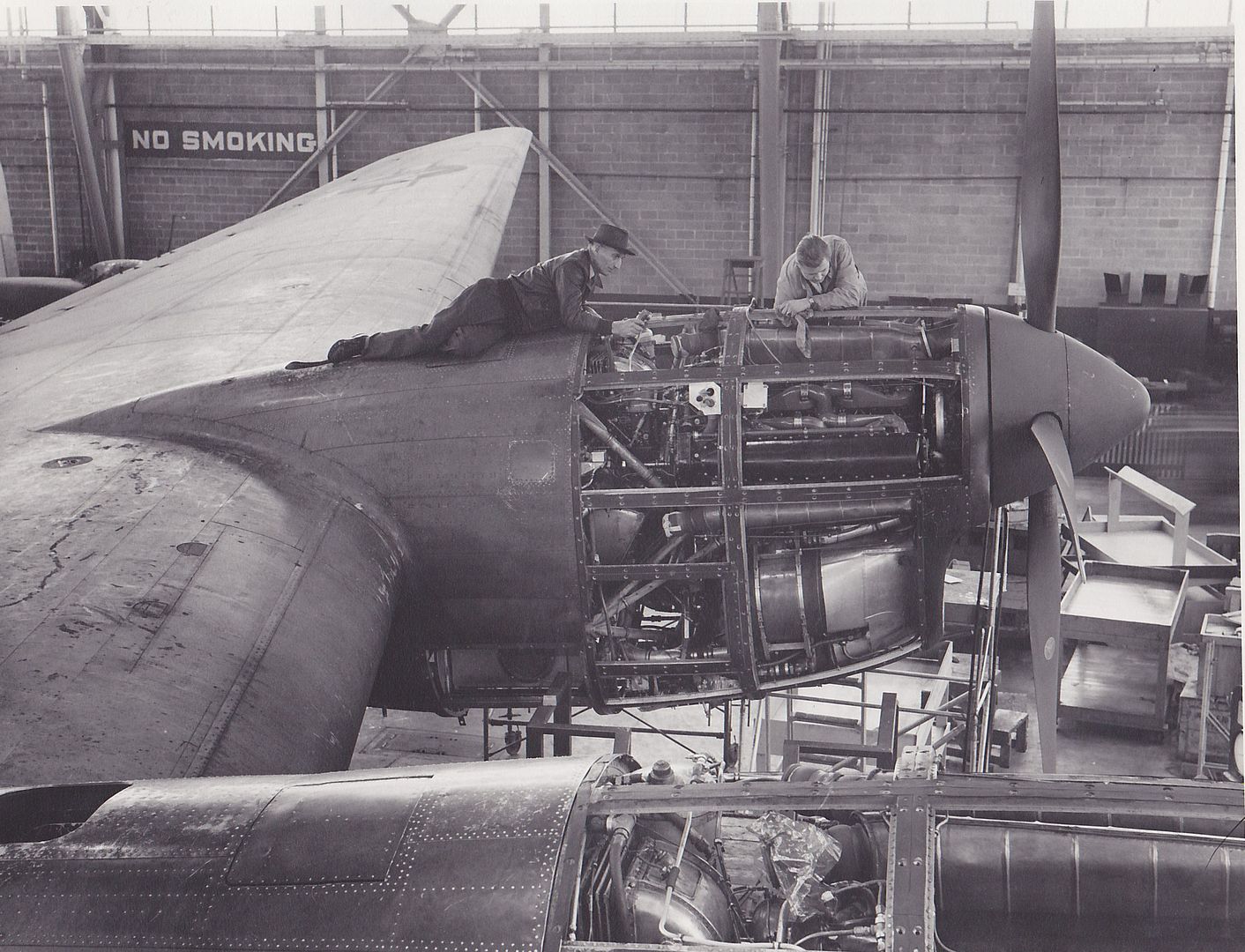
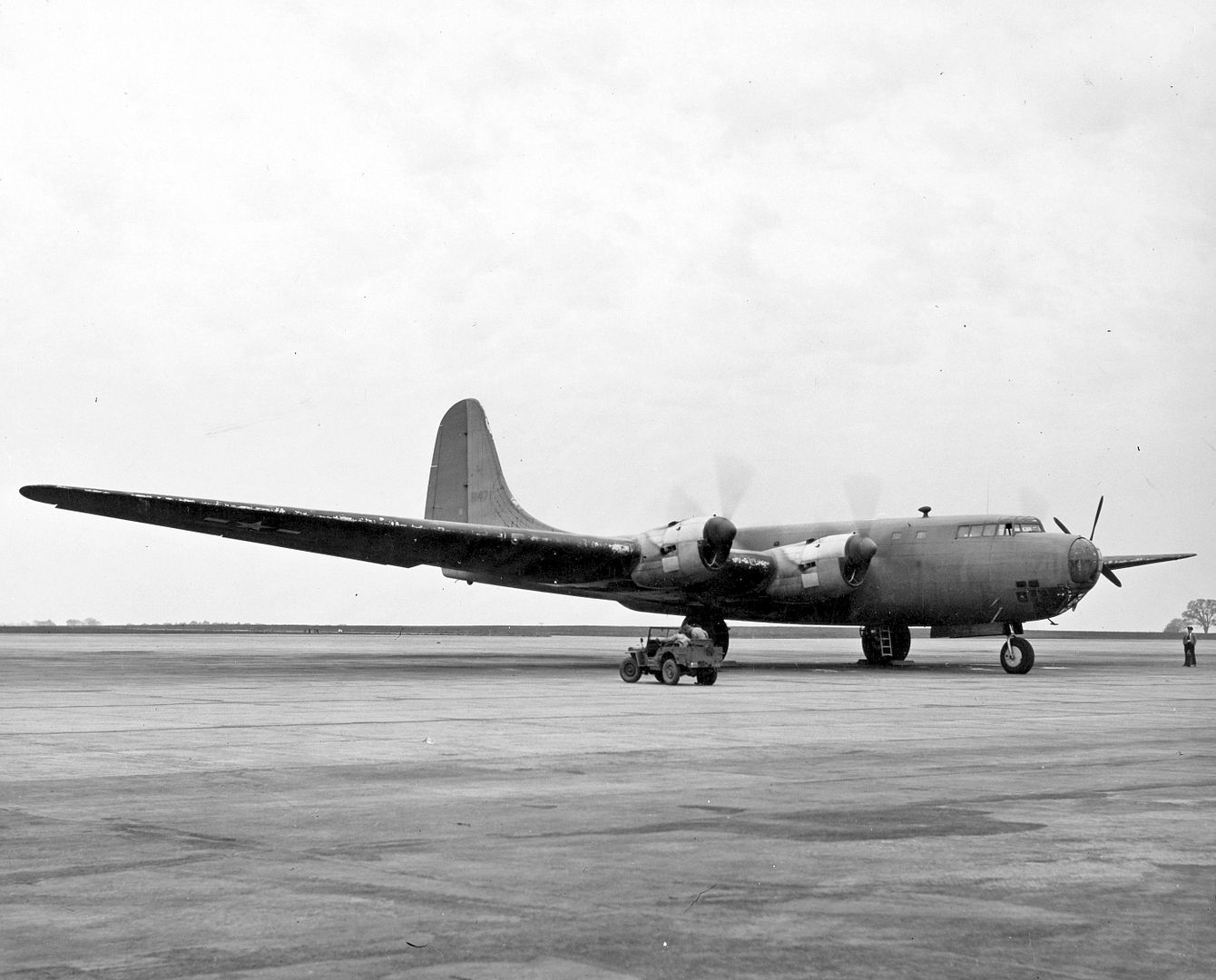

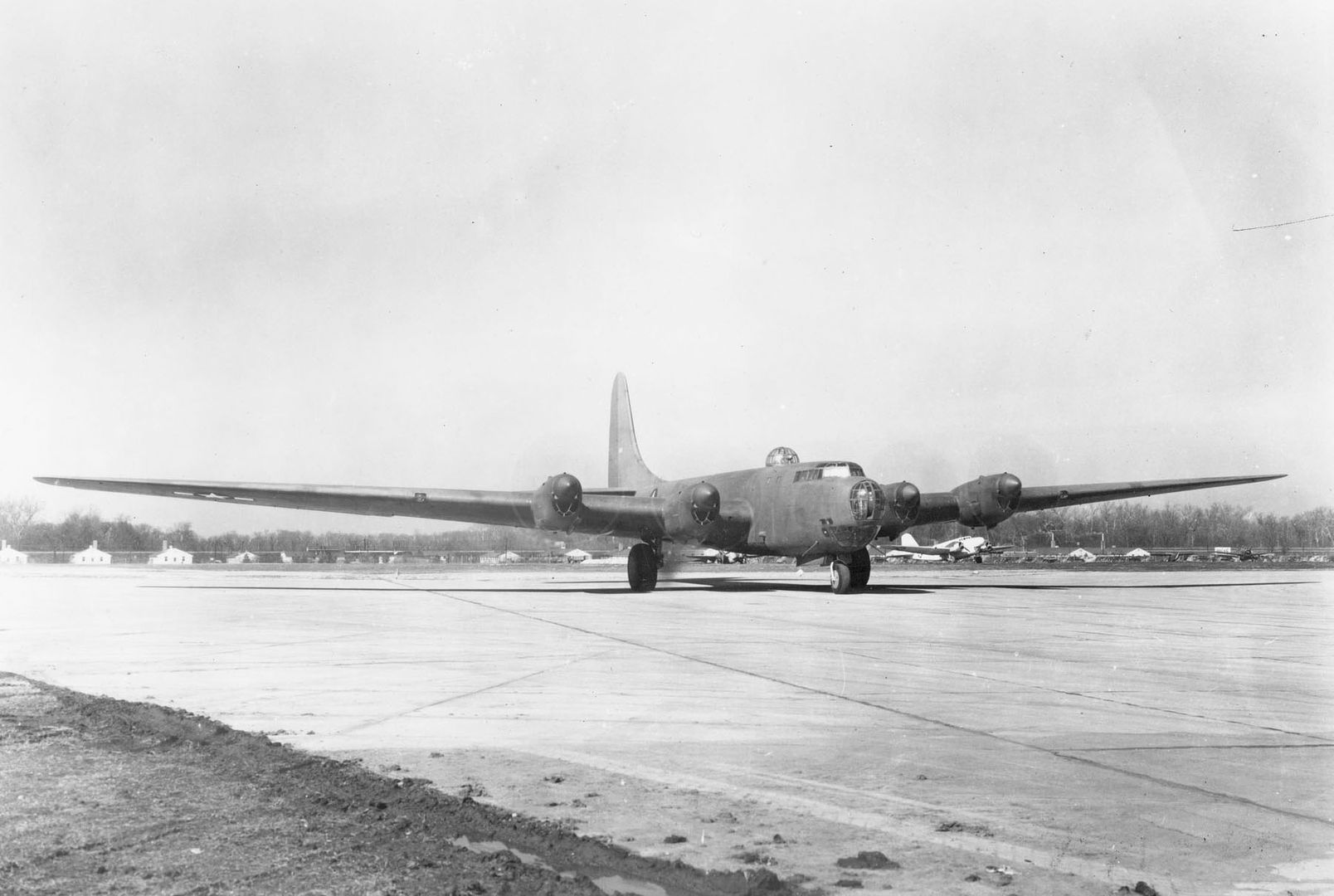


Although the XB-19/XB-19A never saw production, it provided extremely valuable data for features which were later incorporated into the design of other large aircraft such as the Boeing B-29 and Convair B-36.
The XB-19A made its last flight on August 17, 1946, when it was flown from Wright Field to Davis-Monthan Field in Arizona and placed in storage.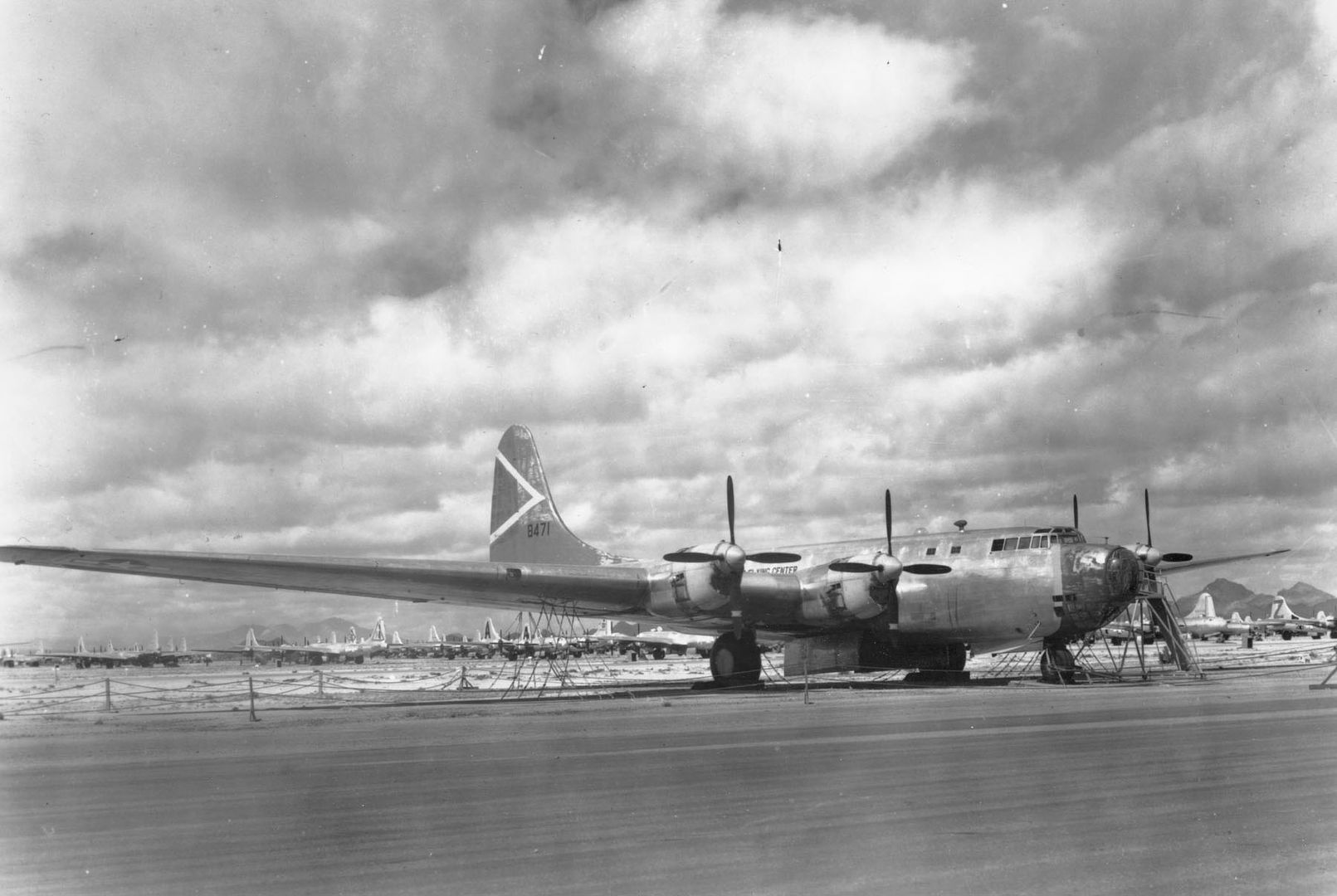
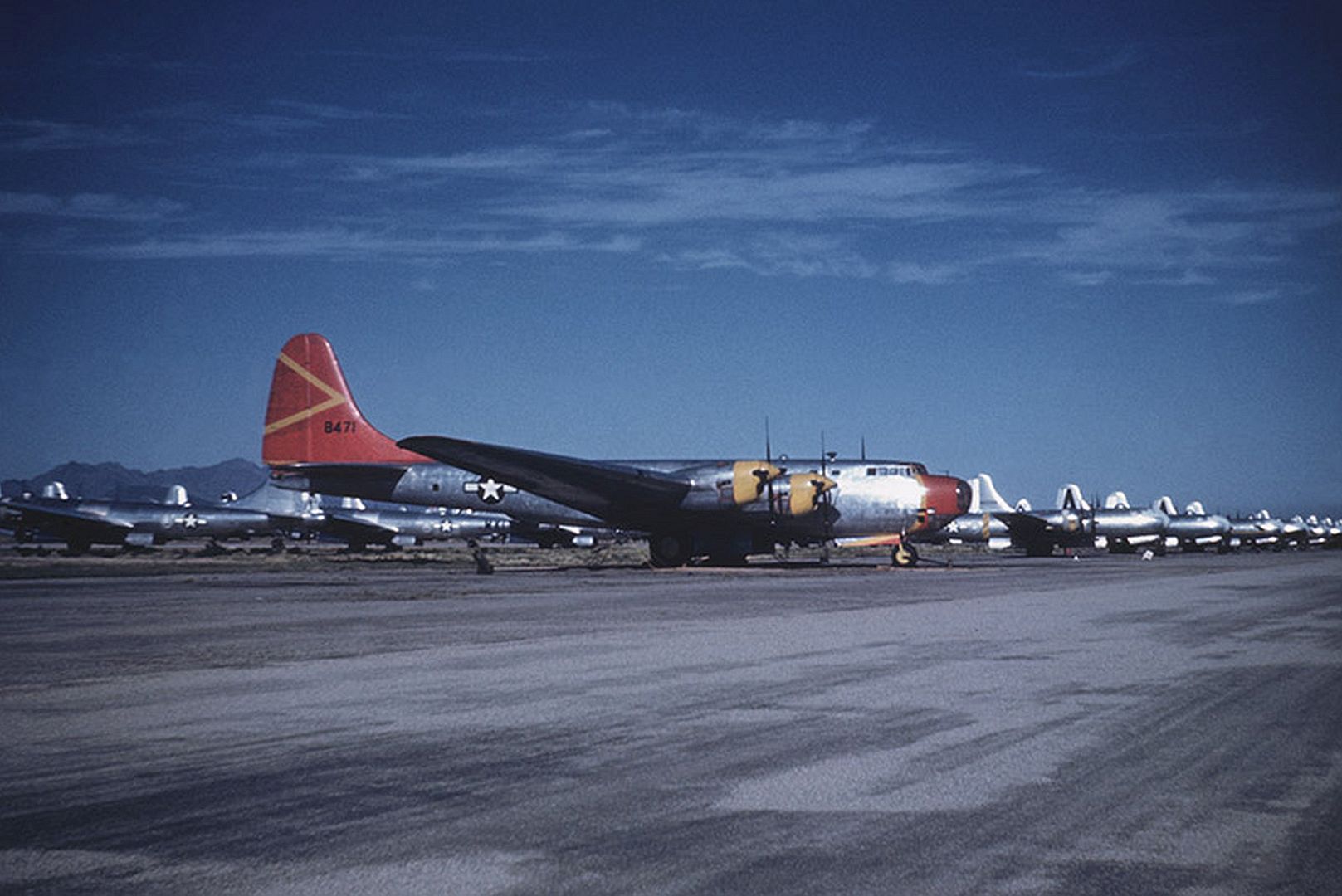
It was scrapped there in June of 1949. However, its nose section somehow ended up in a scrap yard on Alameda Street in Los Angeles, and was still visible there as late as 1955. It is too bad that this aircraft could not have been saved.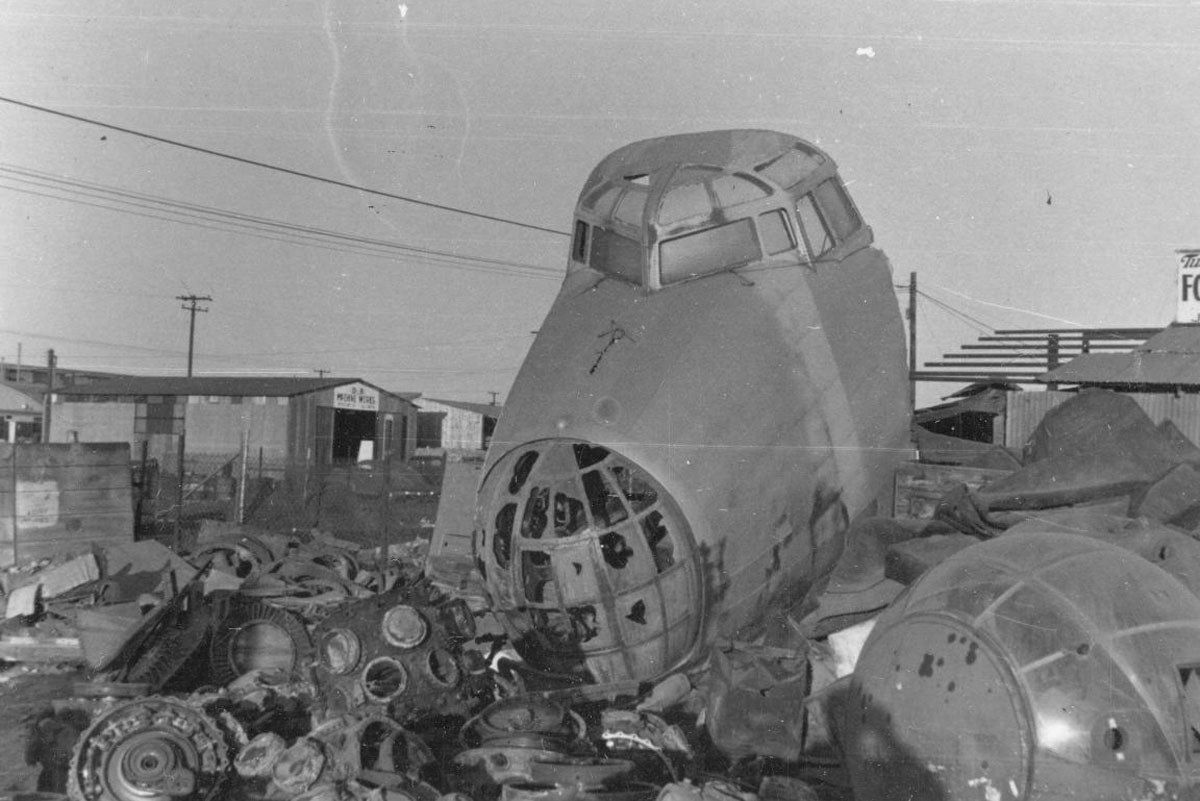
Serial of the Douglas XB-19/XB-19A: 38-471
Specification of Douglas XB-19:
Four Wright R-3350-5 eighteen-cylinder air-cooled radials rated at 2000 hp each for takeoff and 1500 hp at 15,700 feet. Maximum speed 224 mph at 15,700 feet. Cruising speed 135 mph. Initial climb rate 650 feet per minute. Service ceiling 23,000 feet. Normal range 5200 miles, maximum range 7710 miles. Weights: 86,000 pounds empty, 140,000 pounds loaded, 162,000 pounds maximum. Dimensions: wingspan 212 feet, length 132 feet 4 inches, height 42 feet, wing area 4285 square feet. The internal bomb bay could accommodate eight 200-pound, 16 1100-pounds, or 30 600-pound bombs. Ten underwing racks could accommodate bombs of up to 2000 pounds in weight for short-range missions, for a maximum bomb capacity of 37,100 pounds. Defensive armament consisted of two 37-mm cannon, six 0.30 and five 0.50-in machine guns, distributed as follows: one 37-mm cannon and one 0.30-inch machine gun in each of the nose and forward dorsal turrets, one 0.5-inch machine gun in the tail position, rear dorsal turret, ventral turret, and port and starboard positions. One 0.30-inch machine gun was fitted on each side of the bombardier's position and on each side of the fuselage below the tailplane.
Specification of Douglas XB-19A:
Four 2600 hp Allison V-3420-11 twenty-four cylinder liquid cooled engines. Maximum speed 265 mph at 20,000 feet. Cruising speed 185 mph. Service ceiling 39,000 feet. Normal range 4200 miles Weights: 92,400 pounds empty, 140,230 pounds loaded. Dimensions: wingspan 212 feet, length 132 feet 4 inches, height 42 feet, wing area 4285 square feet.
Post a reply
- Go to Previous topic
- Go to Next topic
- Go to Welcome
- Go to Introduce Yourself
- Go to General Discussion
- Go to Screenshots, Images and Videos
- Go to Off topic
- Go to Works in Progress
- Go to Skinning Tips / Tutorials
- Go to Skin Requests
- Go to IJAAF Library
- Go to Luftwaffe Library
- Go to RAF Library
- Go to USAAF / USN Library
- Go to Misc Library
- Go to The Ops Room
- Go to Made in Germany
- Go to Campaigns and Missions
- Go to Works in Progress
- Go to Juri's Air-Raid Shelter
- Go to Campaigns and Missions
- Go to Works in Progress
- Go to Skinpacks
- Go to External Projects Discussion
- Go to Books & Resources
